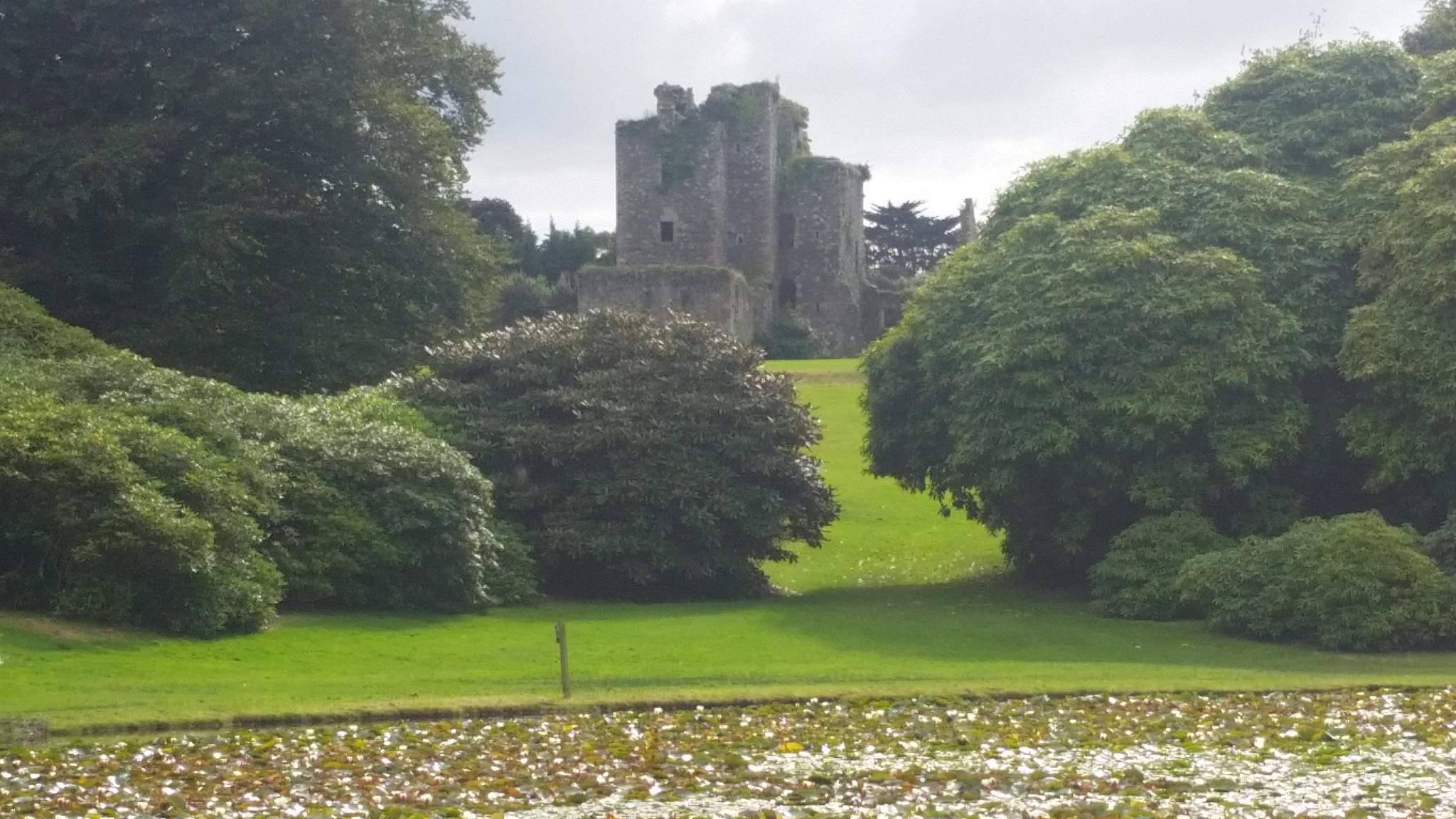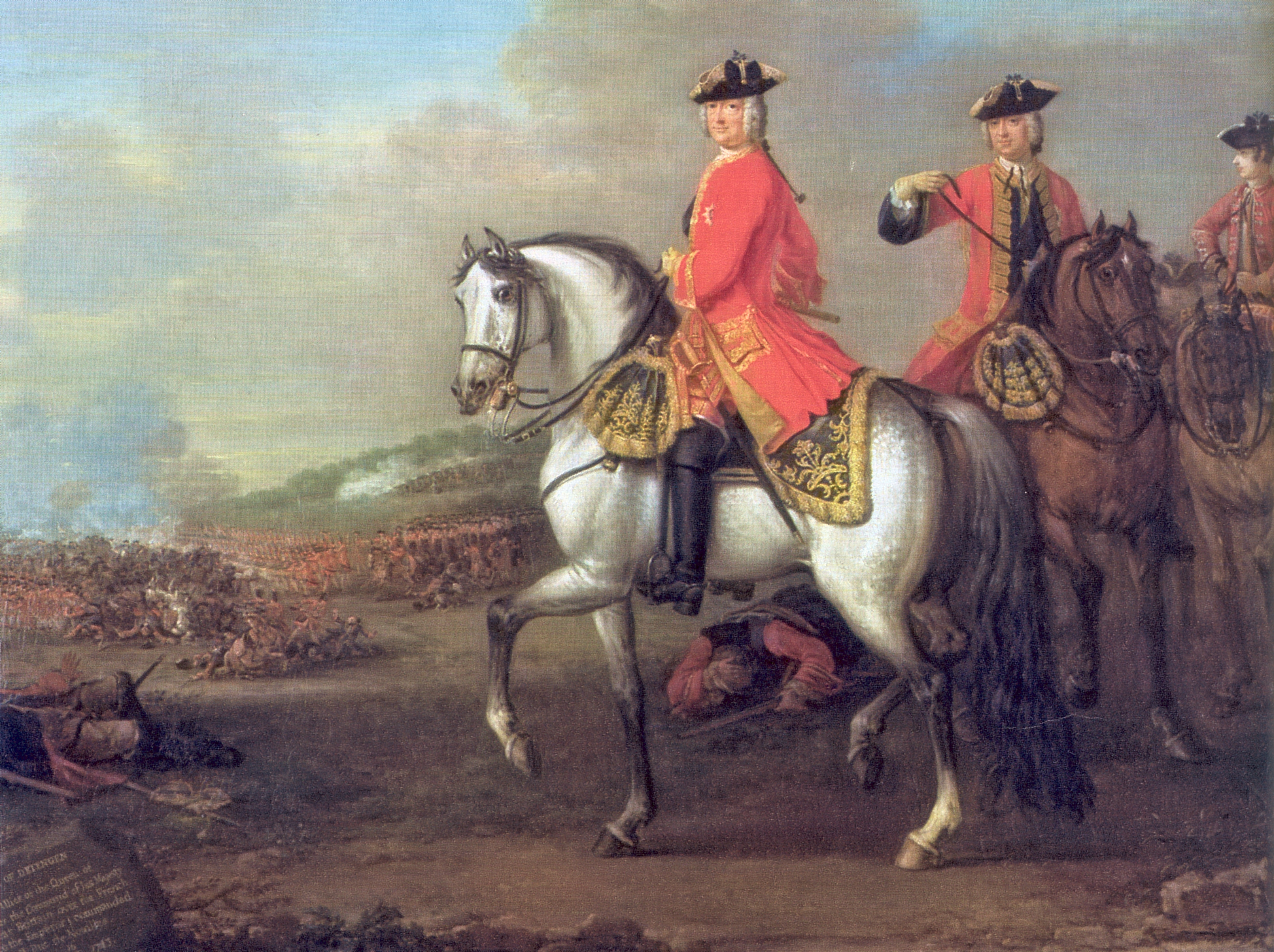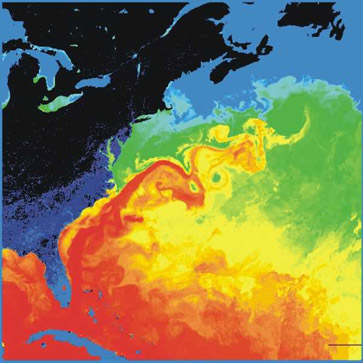|
Castle Kennedy
Castle Kennedy is a small village east of Stranraer in Dumfries and Galloway, south-west Scotland. It is on the A75 road, and is within the civil parish of Inch. The village is to the south of the Lochinch Castle estate, which includes the ruins of the 17th-century Castle Kennedy, as well as Castle Kennedy Gardens which are open to the public. Prior to the Reformation the two lochs within the Lochinch estate, Black Loch and White Loch, were together known as Loch Crindil. A small island in the White Loch was the site of a church, which may have given the parish its name: "the Inch", from the gd, innis, meaning "island". Castle Kennedy was built in 1607 as a mansion house by the Earl of Cassilis, on the site of an older castle. It was acquired in 1677 by Sir John Dalrymple, later the Earl of Stair, though the house burned down in 1716. The 2nd Earl retained the ruin as a focal point for new formal gardens laid out from 1720 to 1730, following his time as ambassador at Versai ... [...More Info...] [...Related Items...] OR: [Wikipedia] [Google] [Baidu] |
Francis Grose
Francis Grose (born before 11 June 1731 – 12 May 1791) was an English antiquary, draughtsman, and lexicographer. He produced ''A Classical Dictionary of the Vulgar Tongue'' (1785) and ''A Provincial Glossary, with a Collection of Local Proverbs, and Popular Superstitions'' (1787). Early life Grose was born at his father's house in Broad Street, St-Peter-le-Poer, London. His parents were Swiss immigrant and jeweller Francis Jacob Grose (d. 1769), and his wife, Anne (d. 1773), daughter of Thomas Bennett of Greenford in Middlesex. Grose was baptised on 11 June 1731 in the parish of St Peter-le-Poer. The eldest of seven children, Grose probably received a classical education but first aimed at a career in the Army. In 1747, he was in Flanders, apparently as a volunteer in Howard's (later 19th) regiment of foot: later he received a commission as cornet in Cobham's (later 10th) regiment of dragoons. Posted to Kent on excise duties in 1750, he met and married Catherine Jo ... [...More Info...] [...Related Items...] OR: [Wikipedia] [Google] [Baidu] |
John Dalrymple, 2nd Earl Of Stair
Field Marshal John Dalrymple, 2nd Earl of Stair (20 July 16739 May 1747) was a Scottish soldier and diplomat. He served in the Nine Years' War and the War of the Spanish Succession and, after a period as British Ambassador in Paris, became a military commander at the Battle of Dettingen during the War of the Austrian Succession. Early military career Born the son of John Dalrymple, 2nd Viscount Stair (and later 1st Earl of Stair) and Elizabeth Dalrymple (née Dundas), Dalrymple accidentally killed his brother in a shooting accident in April 1682 and thereafter spent most of his early life in the Netherlands where he studied at Leiden University. He joined up as a volunteer for the Nine Years' War with the Earl of Angus's Regiment and fought at the Battle of Steenkerque in August 1692.Heathcote, p.97 At Steenkerque he rallied his regiment several times when the ranks had been broken by cannon fire. In 1695 he became Master of Stair when his father succeeded to the Viscoun ... [...More Info...] [...Related Items...] OR: [Wikipedia] [Google] [Baidu] |
RAF Castle Kennedy
Royal Air Force Castle Kennedy, or more simply RAF Castle Kennedy, is a former Royal Air Force satellite station located in Castle Kennedy, Dumfries and Galloway, Scotland. The following units were here at some point: * No. 2 Squadron RAF * No. 2 Torpedo Training Unit RAF (December 1942 - September 1943) * No. 3 Air Gunners School RAF (April - December 1942 & November 1943 - June 1945 * No. 10 Air Gunners School RAF (July - December 1941) * Detachment of No. 17 Service Flying Training School RAF (November - December 1944) * No. 104 Storage Sub Unit of No. 57 Maintenance Unit RAF (July 1945 - September 1947) * No. 2799 Squadron RAF Regiment * Central Gunnery School RAF (June - December 1941) References Citations Bibliography * {{Royal Air Force Castle Kennedy Castle Kennedy is a small village east of Stranraer in Dumfries and Galloway, south-west Scotland. It is on the A75 road, and is within the civil parish of Inch. The village is to the south of the Lochinch Castl ... [...More Info...] [...Related Items...] OR: [Wikipedia] [Google] [Baidu] |
Stranraer Railway Station
, symbol_location = gb , symbol = rail , image = Stranraer railway station.jpg , caption = 156 434 at Stranraer , borough = Stranraer, Dumfries and Galloway , country = Scotland , coordinates = , grid_name = Grid reference , grid_position = , manager = ScotRail , platforms = 2 (1 in use) , code = STR , original = Portpatrick Railway , pregroup = Portpatrick and Wigtownshire Joint Railway , postgroup = London Midland and Scottish Railway , years = 1 October 1862 , events = Opened as ''Stranraer Harbour'' , years1 = by 1996 , events1 = Renamed ''Stranraer'' , mpassengers = , footnotes = Passenger statistics from the Office of Rail and Road Stranraer railway station (formerly known as Stranraer Harbour railway station) is a railway sta ... [...More Info...] [...Related Items...] OR: [Wikipedia] [Google] [Baidu] |
Portpatrick And Wigtownshire Joint Railway
The Portpatrick and Wigtownshire Joint RailwaysThe final word is in the plural. was a network of railway lines serving sparsely populated areas of south-west Scotland. The title appeared in 1885 when the previously independent Portpatrick Railway (PPR) and Wigtownshire Railway (WR) companies were amalgamated by Act of Parliament into a new company jointly owned by the Caledonian Railway, Glasgow & South Western Railway, Midland Railway and the London & North Western Railway and managed by a committee called the Portpatrick and Wigtownshire Joint Committee. The Portpatrick Railway connected and , opened in 1861 and 1862 and was intended to revive the transit to the north of Ireland through Portpatrick, although Stranraer actually became the dominant port. The line became known as the ''Paddy'' because of its connection to Ireland. [...More Info...] [...Related Items...] OR: [Wikipedia] [Google] [Baidu] |
Castle Kennedy 10
A castle is a type of fortified structure built during the Middle Ages predominantly by the nobility or royalty and by military orders. Scholars debate the scope of the word ''castle'', but usually consider it to be the private fortified residence of a lord or noble. This is distinct from a palace, which is not fortified; from a fortress, which was not always a residence for royalty or nobility; from a ''pleasance'' which was a walled-in residence for nobility, but not adequately fortified; and from a fortified settlement, which was a public defence – though there are many similarities among these types of construction. Use of the term has varied over time and has also been applied to structures such as hill forts and 19th-20th century homes built to resemble castles. Over the approximately 900 years when genuine castles were built, they took on a great many forms with many different features, although some, such as curtain walls, arrowslits, and portcullises, were ... [...More Info...] [...Related Items...] OR: [Wikipedia] [Google] [Baidu] |
Scotland
Scotland (, ) is a country that is part of the United Kingdom. Covering the northern third of the island of Great Britain, mainland Scotland has a border with England to the southeast and is otherwise surrounded by the Atlantic Ocean to the north and west, the North Sea to the northeast and east, and the Irish Sea to the south. It also contains more than 790 islands, principally in the archipelagos of the Hebrides and the Northern Isles. Most of the population, including the capital Edinburgh, is concentrated in the Central Belt—the plain between the Scottish Highlands and the Southern Uplands—in the Scottish Lowlands. Scotland is divided into 32 administrative subdivisions or local authorities, known as council areas. Glasgow City is the largest council area in terms of population, with Highland being the largest in terms of area. Limited self-governing power, covering matters such as education, social services and roads and transportation, is devolved from the ... [...More Info...] [...Related Items...] OR: [Wikipedia] [Google] [Baidu] |
Rhododendron
''Rhododendron'' (; from Ancient Greek ''rhódon'' "rose" and ''déndron'' "tree") is a very large genus of about 1,024 species of woody plants in the heath family (Ericaceae). They can be either evergreen or deciduous. Most species are native to eastern Asia and the Himalayan region, but smaller numbers occur elsewhere in Asia, and in North America, Europe and Australia. It is the national flower of Nepal, the state flower of Washington and West Virginia in the United States, the state flower of Nagaland in India, the provincial flower of Jiangxi in China and the state tree of Sikkim and Uttarakhand in India. Most species have brightly colored flowers which bloom from late winter through to early summer. Azaleas make up two subgenera of ''Rhododendron''. They are distinguished from "true" rhododendrons by having only five anthers per flower. Species Description ''Rhododendron'' is a genus of shrubs and small to (rarely) large trees, the smallest species growing to ... [...More Info...] [...Related Items...] OR: [Wikipedia] [Google] [Baidu] |
Gulf Stream
The Gulf Stream, together with its northern extension the North Atlantic Drift, is a warm and swift Atlantic ocean current that originates in the Gulf of Mexico and flows through the Straits of Florida and up the eastern coastline of the United States then veers east near 36 latitude (North Carolina) and moves toward Northwest Europe as the North Atlantic Current. The process of western intensification causes the Gulf Stream to be a northwards accelerating current off the east coast of North America. At about , it splits in two, with the northern stream, the North Atlantic Drift, crossing to Northern Europe and the southern stream, the Canary Current, recirculating off West Africa. The Gulf Stream influences the climate of the coastal areas of the east coast of the United States from Florida to southeast Virginia (near 36 north latitude), and to a greater degree the climate of Northwest Europe. There is consensus that the climate of northwest Europe is warmer than other ar ... [...More Info...] [...Related Items...] OR: [Wikipedia] [Google] [Baidu] |
Versailles
The Palace of Versailles ( ; french: Château de Versailles ) is a former royal residence built by King Louis XIV located in Versailles, about west of Paris, France. The palace is owned by the French Republic and since 1995 has been managed, under the direction of the French Ministry of Culture, by the Public Establishment of the Palace, Museum and National Estate of Versailles. Some 15,000,000 people visit the palace, park, or gardens of Versailles every year, making it one of the most popular tourist attractions in the world. Louis XIII built a simple hunting lodge on the site of the Palace of Versailles in 1623 and replaced it with a small château in 1631–34. Louis XIV expanded the château into a palace in several phases from 1661 to 1715. It was a favorite residence for both kings, and in 1682, Louis XIV moved the seat of his court and government to Versailles, making the palace the ''de facto'' capital of France. This state of affairs was continued by Kings Louis ... [...More Info...] [...Related Items...] OR: [Wikipedia] [Google] [Baidu] |
Earl Of Stair
Earl of Stair is a title in the Peerage of Scotland. It was created in 1703 for the lawyer and statesman John Dalrymple, 2nd Viscount of Stair. Dalrymple's father, James Dalrymple, had been a prominent lawyer; having served as Lord President of the Court of Session, he was created a baronet, of Stair in the County of Ayr, in the Baronetage of Nova Scotia in 1664, and in 1690 he was raised to the Peerage of Scotland as Lord Glenluce and Stranraer and Viscount of Stair. The son, John Dalrymple, actively supported William III's claim to the throne and served as Secretary of State for Scotland. However, he was forced to resign after he authorised the massacre of Glencoe of 1692. He was made Lord Newliston, Glenluce and Stranraer and Viscount of Dalrymple, at the same time as he was given the earldom, also in the Peerage of Scotland. All three titles were created with remainder, in default of male issue of his own, to the heirs male of his father. The first Earl of Stair was s ... [...More Info...] [...Related Items...] OR: [Wikipedia] [Google] [Baidu] |









